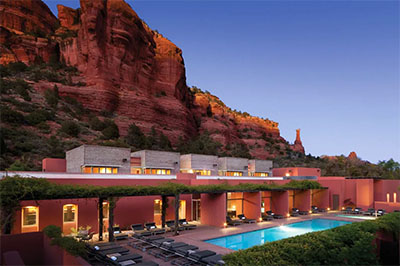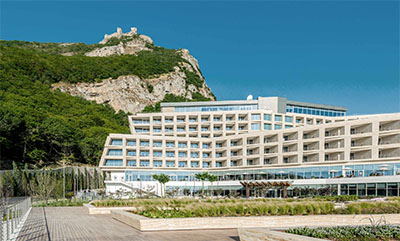Articles
What is a Spa?
12 March 2010
Overview of the History of Spa and Its Main Types
The Origin of “Spa”
The word Spa is derived from Spadana, the ancient name of Isfahan. The historical bathhouses of Isfahan are living symbols of the grandeur and refinement of Iranian civilization. A French historian once wrote in his travel notes:
“At a time when Europeans were washing themselves in barrels, and a French prince proudly declared he had not bathed for five years, the cities of Isfahan and Kashan had magnificent bathhouses as splendid as royal palaces.”
Among the most famous traditional bathhouses of that era were Sheikh Bahai Bathhouse, Ali Qoli Agha Bathhouse, and Shah Bathhouse. The art of massage was one of the most cherished rituals in these places. Over time, the term spa became associated with venues offering massage and relaxation treatments.
A spa today is a place designed to enhance your health and well-being. There are several different types of spas, and understanding their differences helps you choose one that truly matches your needs.
 Day Spa
Day Spa
A Day Spa is a place you visit during the day to receive treatments such as massage, facial care, or body services like scrubs and wraps. The name “Day Spa” comes from the fact that, unlike resort or destination spas, you don’t stay overnight.
Day spas range from small local studios with two treatment rooms in a tourist village to large, luxurious centers offering extensive service menus.
Some day spas also provide hair and beauty salon services alongside spa treatments. However, these areas should always remain separate—salons are usually lively and noisy, while a spa environment must be calm and relaxing.
It’s a good idea to visit the spa in advance to ensure it meets proper spa standards. Some beauty salons simply add a massage room and call themselves a “spa,” but this naming is not accurate.
You can also receive day spa services in hotels, even if you are not an overnight guest. Hotel spas tend to be more expensive, but they may include access to facilities such as saunas, steam rooms, or pools.
A proper day spa should offer:
- A clean and hygienic environment
- Quiet, peaceful surroundings
- Comfortable robes and slippers (some small spas may not have changing rooms)
- A complete service menu of massages, facials, and body treatments
- Professional massage therapists
- Clean treatment rooms and linens
- Quality spa products
- A relaxing waiting area or tea lounge
- In larger spas, lockers and sauna facilities
 Health or Destination Spa
Health or Destination Spa
A Health Spa (or Destination Spa) is focused on helping guests improve their lifestyle and overall well-being through:
- Healthy menus emphasizing whole grains, fresh fruits, and vegetables, along with nutrition education
- Stress management, wellness, and fitness classes
- Massage and body therapies
- Educational workshops for adopting healthy daily habits
Guests usually stay for at least two or three nights, though some programs are longer. Rates typically include all meals, classes, seminars, and selected treatments.
Nutrition at Health Spas
Most health spas serve strictly healthy meals, but goals may differ. Some focus on weight loss through low-calorie plans, while others promote balanced eating without restrictions. Some avoid sugary drinks, while others do not. The general principle is wholesome food, though not necessarily organic.
Social Atmosphere
The environment in health spas is friendly and community-oriented. You meet like-minded people who share your interest in wellness. Many facilities host a limited number of guests (often around 60 on average), so small groups form naturally—joining walks, exercise classes, or meals together. Staff-to-guest ratios are high, ensuring attentive service.
Variety and Cost
Health spas vary greatly in size, price, and programs—hosting anywhere from 8 to 250 guests. Prices range from affordable stays to luxury packages costing several thousand dollars per week.
 Resort or Hotel Spa
Resort or Hotel Spa
A Resort Spa (or Hotel Spa) offers a relaxing experience for both guests and locals. You can stay overnight, enjoy massages, and dine freely on your favorite foods—even steak or soda.
These spas differ from health spas in purpose: health spas aim for personal transformation and healthy living, while resort spas focus on leisure and pampering. Many modern health spas still use the “Resort Spa” label for better online visibility.
Classic resort spas often feature golf, tennis, swimming, fitness centers, and children’s clubs, with spa services as one of several amenities. Some may also hold fitness classes for an extra fee.
Older hotel spas (from the 1990s) tend to be small and modest, whereas newer ones are typically larger and more luxurious.
Differences Between Resort Spas and Health Spas
Resort spas provide entertainment and sports along with spa treatments. Meals may include healthy options, but are not strictly controlled. Educational programs are fewer and often charged separately.
The line between these two types has become blurred—some hotels now call themselves “wellness resorts” even without structured wellness programs.
In resort spas, you usually pay per service rather than in an all-inclusive package. Yoga or exercise classes may or may not be offered, and treatment menus are often shorter. Restaurants serve both healthy and indulgent dishes, catering to guests who want a balance between relaxation and pleasure.
Today, almost every hotel or resort advertises a “spa,” but not all truly are. Some might simply have a jacuzzi and one massage room. It’s always wise to check before booking.
Key Notes About Resort Spas
Large resort spas often include activities such as golf, swimming, tennis, water sports, horseback riding, or skiing. Some even have kids’ camps.
- Hotel spas in cities usually lack outdoor activities.
- Meals are not included in the price, unlike health spas.
- Fitness classes often cost extra.
- Children are usually welcome in resort spas but not in health spas.
The word Spa is derived from Spadana, the ancient name of Isfahan. The historical bathhouses of Isfahan are living symbols of the grandeur and refinement of Iranian civilization. A French historian once wrote in his travel notes:
“At a time when Europeans were washing themselves in barrels, and a French prince proudly declared he had not bathed for five years, the cities of Isfahan and Kashan had magnificent bathhouses as splendid as royal palaces.”
Among the most famous traditional bathhouses of that era were Sheikh Bahai Bathhouse, Ali Qoli Agha Bathhouse, and Shah Bathhouse. The art of massage was one of the most cherished rituals in these places. Over time, the term spa became associated with venues offering massage and relaxation treatments.
A spa today is a place designed to enhance your health and well-being. There are several different types of spas, and understanding their differences helps you choose one that truly matches your needs.
 Day Spa
Day SpaA Day Spa is a place you visit during the day to receive treatments such as massage, facial care, or body services like scrubs and wraps. The name “Day Spa” comes from the fact that, unlike resort or destination spas, you don’t stay overnight.
Day spas range from small local studios with two treatment rooms in a tourist village to large, luxurious centers offering extensive service menus.
Some day spas also provide hair and beauty salon services alongside spa treatments. However, these areas should always remain separate—salons are usually lively and noisy, while a spa environment must be calm and relaxing.
It’s a good idea to visit the spa in advance to ensure it meets proper spa standards. Some beauty salons simply add a massage room and call themselves a “spa,” but this naming is not accurate.
You can also receive day spa services in hotels, even if you are not an overnight guest. Hotel spas tend to be more expensive, but they may include access to facilities such as saunas, steam rooms, or pools.
A proper day spa should offer:
- A clean and hygienic environment
- Quiet, peaceful surroundings
- Comfortable robes and slippers (some small spas may not have changing rooms)
- A complete service menu of massages, facials, and body treatments
- Professional massage therapists
- Clean treatment rooms and linens
- Quality spa products
- A relaxing waiting area or tea lounge
- In larger spas, lockers and sauna facilities
 Health or Destination Spa
Health or Destination SpaA Health Spa (or Destination Spa) is focused on helping guests improve their lifestyle and overall well-being through:
- Healthy menus emphasizing whole grains, fresh fruits, and vegetables, along with nutrition education
- Stress management, wellness, and fitness classes
- Massage and body therapies
- Educational workshops for adopting healthy daily habits
Guests usually stay for at least two or three nights, though some programs are longer. Rates typically include all meals, classes, seminars, and selected treatments.
Nutrition at Health Spas
Most health spas serve strictly healthy meals, but goals may differ. Some focus on weight loss through low-calorie plans, while others promote balanced eating without restrictions. Some avoid sugary drinks, while others do not. The general principle is wholesome food, though not necessarily organic.
Social Atmosphere
The environment in health spas is friendly and community-oriented. You meet like-minded people who share your interest in wellness. Many facilities host a limited number of guests (often around 60 on average), so small groups form naturally—joining walks, exercise classes, or meals together. Staff-to-guest ratios are high, ensuring attentive service.
Variety and Cost
Health spas vary greatly in size, price, and programs—hosting anywhere from 8 to 250 guests. Prices range from affordable stays to luxury packages costing several thousand dollars per week.
 Resort or Hotel Spa
Resort or Hotel SpaA Resort Spa (or Hotel Spa) offers a relaxing experience for both guests and locals. You can stay overnight, enjoy massages, and dine freely on your favorite foods—even steak or soda.
These spas differ from health spas in purpose: health spas aim for personal transformation and healthy living, while resort spas focus on leisure and pampering. Many modern health spas still use the “Resort Spa” label for better online visibility.
Classic resort spas often feature golf, tennis, swimming, fitness centers, and children’s clubs, with spa services as one of several amenities. Some may also hold fitness classes for an extra fee.
Older hotel spas (from the 1990s) tend to be small and modest, whereas newer ones are typically larger and more luxurious.
Differences Between Resort Spas and Health Spas
Resort spas provide entertainment and sports along with spa treatments. Meals may include healthy options, but are not strictly controlled. Educational programs are fewer and often charged separately.
The line between these two types has become blurred—some hotels now call themselves “wellness resorts” even without structured wellness programs.
In resort spas, you usually pay per service rather than in an all-inclusive package. Yoga or exercise classes may or may not be offered, and treatment menus are often shorter. Restaurants serve both healthy and indulgent dishes, catering to guests who want a balance between relaxation and pleasure.
Today, almost every hotel or resort advertises a “spa,” but not all truly are. Some might simply have a jacuzzi and one massage room. It’s always wise to check before booking.
Key Notes About Resort Spas
Large resort spas often include activities such as golf, swimming, tennis, water sports, horseback riding, or skiing. Some even have kids’ camps.
- Hotel spas in cities usually lack outdoor activities.
- Meals are not included in the price, unlike health spas.
- Fitness classes often cost extra.
- Children are usually welcome in resort spas but not in health spas.








